#(there was not war in 1885 but it's not like the situation in 'italy' was a good one)
Text
I'm obsessed with that poll what do you mean your grandma's mother went to collage.
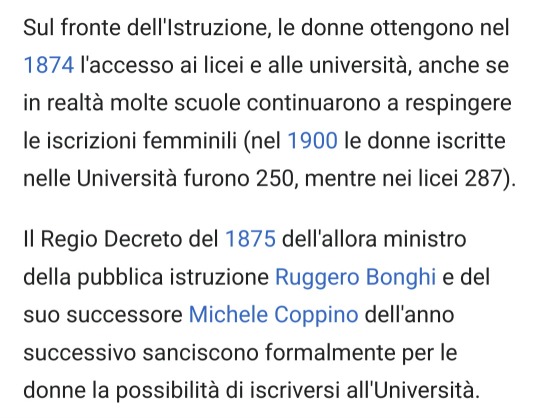
It wasn't even allowed in Italy
#ok my grandma was born in? shit I don't remember hold on#1926 i think#so let's say her mother was born in 1885 more or less#so potentially she could but???? there was war?????#like????#my own mother couldn't go past elementay school she had to take night classes for a middle school diploma when she came here#I'm sorry I'm astonished this is so weird to me#(there was not war in 1885 but it's not like the situation in 'italy' was a good one)#i made a mistake I'm tired#her mother could have been born in 1900#I'm positive she did not have my grandmother at 40yo#even tho my grandmother did have my mom at 40yo#it's a long story
9 notes
·
View notes
Text
So finally catching up with Kuroshitsuji...Damn...If this is what we get for Meyrin, what are we gonna get for Bardroy
n So far what’s interesting about this origin for our maid is that it doesn’t cut corners in regard to Victorian history at all. Yana has grown a hell of a lot in her blending of modern ideas (boy bands) and placing them in the period in a way that makes logical sense.
Firstly we have the idea of Rin having to deal with the mob and the whole idea of orientalism in this period. Her clothing to cover her gender is well designed in this case and something that, at this point in time, would be accessible to young women as there was athletic wear that was used for bike riding and other outdoor activities. So Meyrin wearing boys' clothing, as we see here, wouldn’t get her a second glance, especially if she’s hiding in the poorer side of town after this little escapade in Chapter 160.
What’s got my attention on this is that Lau is coming, and I have a strange feeling he’s going to play a part in getting Meyrin in with Ciel and also out of her assassin contract. This isn’t like Finny where it’s kind of a One, two, three and done situation, though I get the feeling that we're going to be coming back to that at some point. Meyrin is stuck in a place where she can’t just walk away. So Lau probably is going to be coming into play here.
What’s interesting to me is that Lau is coming from Marseilles, which is in France. Now if you know anything about history of this period this should be a bit interesting because, if the dates are right, then this means that this is taking place just after the Sino-France war, as the date suggests 1887.
Now why this is important is that between 1884 and 1885 China and France were fighting a Sino-France War or Tonquin War, and lead to Vietnam being placed under France's control until the 1950s. So this war also gave the Empress more power over the remaining areas of her country, and this wasn’t a fun time for the people of China. They weren’t happy with her, or at least the military wasn’t because any growth or progress they wanted was blocked.
So what’s of interest here is that we know that Lau was sent to Great Britan after being in Marseilles, which is a hugely important Port city in France, and also had a railway connecting to Italy and other parts of France. Now Lau is from Shanghai and during this time the French had a Concession with China over it, controlling a lot of the political and economic aspects of it. I have no doubt, if Lau is originally from there, that he probably has no love lost over the French.
So why send Lau, well Yana said he’s adaptable. As such he can morph into anything that he needs to, and play any game. He’s a tricky sort. During this time period too, China was dealing with both England and France, and also hints of a rebellion for Democracy that was building up. I have no doubt that at some point we may get some back story as to what Lau was up to in Marseilles, and it should be an interesting read. What I’m curious about is how this is going to play in with the other Ciel’s plans, and, again, I want to point out that we’re not even near the end of the story since there’s a lot more to go.
The reason I think we’re bringing up France now is because of the Connections to both China and England during this time. I have a feeling Lau’s request for payment from Ciel may connect to his time in Marseilles, and why he was placed there in the first place.
Also, I have a strong guess that at some point we’re going to France for the World Exhibition there since it played a large point in later helping to showcase the Changing times.
#kuroshitsuji#kuroshitsuji spoilers#kuroshitsuji theories#chapter 160#meyrin#lau#black butler#black butler spoilers
68 notes
·
View notes
Text
7.15. Summary on the modernization of Korea and the moves against it
Question 7: Modernization of Korea and its obstruction › 15. Summary on the modernization of Korea and the moves against it
Click here for table of contents
7.15. Summary on the modernization of Korea and the moves against it
(1) After Daewongun took control of the government, he refused the demands by Western powers to open the country, repelled French and American forces, and built anti-appeasement steles in various parts of Korea to show its intention to resist opening.
(2) Daewongun was expelled by his son, King Gojong. The Min administration started and concluded the Japan-Korea Treaty of Amity (the Treaty of Ganghwa).
(3) Regarding the Japan-Korea Treaty of Amity, Korean History Textbook for Elementary School points out that it was an unequal treaty concluded to make Korea defenseless against future invasions, arguing as follows:
(i) Japan separated Korea from China as an independent state to make Korea defenseless and to invade it.
(ii) It was unequal that Japan had jurisdiction over Japanese people in Korea.
(iii) It was also unequal that while the number of Korean ports to be opened was stipulated, there was no corresponding disposition on Japan.
(iv) Japan obtained the right to conduct geographical survey on Korean coastlines because it had the intention to make Korea defenseless and invade it.
(4) While A Stratagem for Korea, brought back from Japan by Kim Hong-jip, member of the Second Joseon Susinsa mission, considerably affected the promotion of the enlightenment policy by the government, it also prompted the development of the Wijeongcheoksa movement.
(5) In History Textbook of Korea, there is an article entitled “Read the material: Five reasons against the opening of ports”. While we could say that this was an erroneous opinion proposed due to the lack of understanding and judgment of the circumstances of the day, the textbook refers to it in a positive manner.
(6) The angered soldiers of the conventional army, who lost their jobs, had difficulty making a living and found their delayed salary in rice to contain rice husks and sand, finally rose in rebellion on June 9, 1882 (Imo Incident).
Queen Min requested that Qing should immediately dispatch its troops, and in August, Li Hongzhang dispatched 4,000 soldiers to Seoul, punished those involved in the rebellion that had already ended, and abducted Daewongun to China.
(7) On December 4, 1884, Kim Ok-gyun and others started a coup by obtaining the secret royal order and published the Innovation Policy of 14 Articles in three days. However, Queen Min secretly asked the Qing army to crush Kim’s group and put an end to the reform. Some of the ministers were killed, while Kim and others fled to Japan. Eleven years later, Kim was lured into China where he was assassinated.
(8) After that event, Qing dispatched Yuan Shikai and intensified political interference and economic penetration in Korea. He strengthened political and military interference so much that he was called “governor of Korea” by diplomats who were in Seoul at that time.
(9) In February 1885, under the proposal of an American doctor named Allen, the first Western-style medical institution was established in Hanseong, marking the start of modern medical education.
In 1887, the General Directorate for Telegraph was set up.
The Korean government constructed on its own the Hanseong-Busan telegraph line in 1888 and Hanseong-Wonsan telegraph line in 1891. In August 1886, the Royal English College (Yukyeonggongwon), where education in English was conducted by invited American professors, was established.
In December 1887, the Dongmugongwon was established as the military academy. In 1888, an American took up the post of military instructor.
In May 1884, the Treaty of Amity and Commerce between Russia and Korea was concluded.
In March 1885, the British Eastern Fleet suddenly occupied Geomun-do Island.
Korea concluded the Treaty of Amity with Italy in May 1884 and with France in 1886.
(10) Regretting that Japan could not protect the Kim Ok-gyun administration, it concluded the Treaty of Tianjin on March 4, 1885. According to this treaty, Japan and Qing had the obligation to notify the other in advance when dispatching soldiers in Korea.
(11) In February 1894, under the leadership of the leaders of the Donghak movement, a popular uprising against extreme misgovernment started. The farmers occupied the county office, ousted the magistrate, and recovered the rice embezzled by him, and then they disbanded themselves. However, as the officials who had been dispatched as inspectors proceeded to search for participants in the uprising and committed looting, the farmers resumed actions in late April. They defeated the forces of the governor of Gobu County on May 1, and beat part of the forces of the central government on May 27, 1894.
(12) History Textbook of Korea states that the peasant forces proposed the 12-point Reform Plan and demanded improvement on each of the points. However, it is likely that this plan, which perfectly pointed out the political and social problems of Korea at that time, did not actually exist, but was just described in a history novel at a later date.
(13) After defeating the Qing forces stationed in Korea in a naval battle and a land battle respectively on July 25 and 28, 1894, Japan declared war on Qing on April 1, 1894. The Sino-Japanese War ended with the conclusion of the Treaty of Shimonoseki on April 17, 1895. Qing approved the abolition of suzerainty over Korea, and Korea’s independence from Qing became definitive.
(14) On January 8, 1895, King Gojong announced the Fourteen Clauses of the Charter for the reform of internal administration. This was an important step for modernization, as it could be considered the first basic legislation of Korea. However, the Kim Hong-jip administration was overthrown by King Gojong and the prime minister and his ministers were massacred. That was how efforts for the modernization of Korea were again crushed by King Gojong.
(15) From the reign of Alexander III, Russia intended to bring the Far East under its control. In 1860, it built a military base in the Japan Sea. Russia monopolized the mining and logging rights of Korea, interfered in Korea’s internal affairs by dispatching military instructors and financial counselors, and leased Jeolyoungdo Island in Busan.
Then, Russia leased Lushun and Dalian on the Liaodong Peninsula, built a solid and large-scale fortress on Lushun Port and deployed nearly 50,000 forces. As of 1904, Russia had deployed as many as 320,000 soldiers in the southern part of Manchuria and the Liaodong Peninsula.
Being wary of Russia, which had expanded its sphere of influence to the southernmost edge of the Korean Peninsula, Japan concluded an alliance with the United Kingdom, which shared the same sense of crisis, and with support from the United States, it fought against Russia by raising funds for the war from outside Japan equivalent to several times as much as the national budget and succeeded in removing Russia from Korea and Manchuria. A total of 88,429 were killed and 153,584 were wounded in the fighting.
(16) In 1896, the Korean government invited Seo Jae-pil, who had been in exile in the United States, as the counselor of the Privy Council to promote reform. With the goal of establishing an autonomous and independent state, he founded the Independence Association, with the participation of governmental officials.
The Independent Association adopted the Six Articles of the Charter, which focused on political reforms, and obtained approval from King Gojong.
The conservative forces, critical of such a move, worked out a plot. King Gojong arrested the leaders of the Independent Association and ordered its dissolution. He believed the false charges from the conservatives and lost a third chance for the modernization of Korea. King Gojong’s unflagging resolution to execute the Fourteen Clauses of the Charter, which he swore before the souls of his predecessors, was false.
(17) In 1899, the Korean government announced the Constitution of the Korean Empire, the first Constitution of the Korean state. The constitution stated that the Korean Empire was an autocratic state in which the Emperor held control over legislative, administrative, judicial and military affairs, and allowed the Emperor to directly control the military authority through the establishment of the Supreme Military Council.
Under the Constitution of the Korean Empire, the Emperor monopolized all the power, thereby completely denying the Fourteen Clauses of the Great Charter and the Six Articles of the Charter, which could be considered constitutions for the modernization of Korea.
The Constitution of the Korean Empire completely blocked Korea’s path to modernization. So long as the Korean Empire subsisted, reforms for modernization became institutionally impossible. Moreover, so many talented people who understood the world situation well were either killed or forced to seek refuge abroad.
The Emperor and people of the conservative ruling class must have felt relieved to see this result. However, by making it impossible to conduct autonomous reforms for enlightenment and modernization amidst the rapidly-changing circumstances of Asia in the early 20th century, we believe that the Korean Empire committed a great mistake.
Now, the only way to transform Korea into a modern state was to defeat the Constitution of the Korean Empire. However, it was impossible to move to defeat the Constitution from inside Korea, as people involved would be executed for high treason against the Emperor. In addition, there was the conservative Yangban class, which accounted for more than half of the population and was against the reform. The Korean Empire, placed under the despotic authority of the Emperor in all aspects and maintaining the class system, customs and systems that were the root of all troubles, completely denied the freedom of the people. In these circumstances, it was impossible for Korea to implement reforms for modernization and extricate itself from its undeveloped and miserable condition.
The items 1 to 15 above describe the reality of “rule of the Korean race by the Korean race” towards the end of the Joseon era.
We would like to ask people in the world how Korea could have survived under these circumstances.
1 note
·
View note
Photo
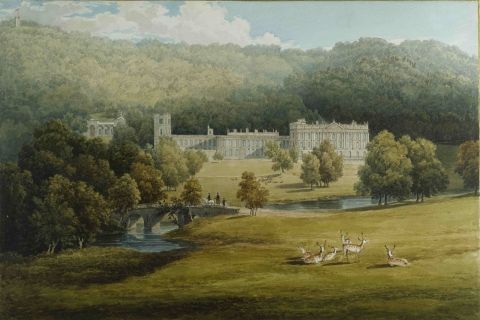
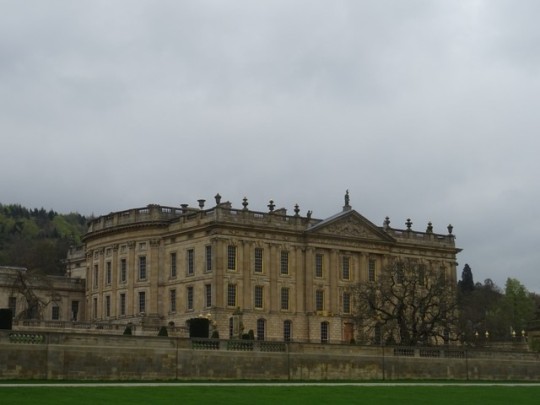
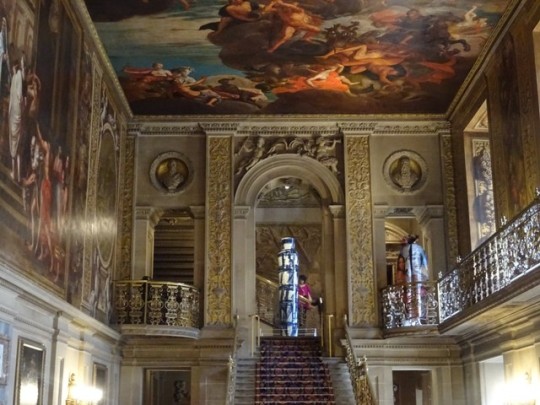
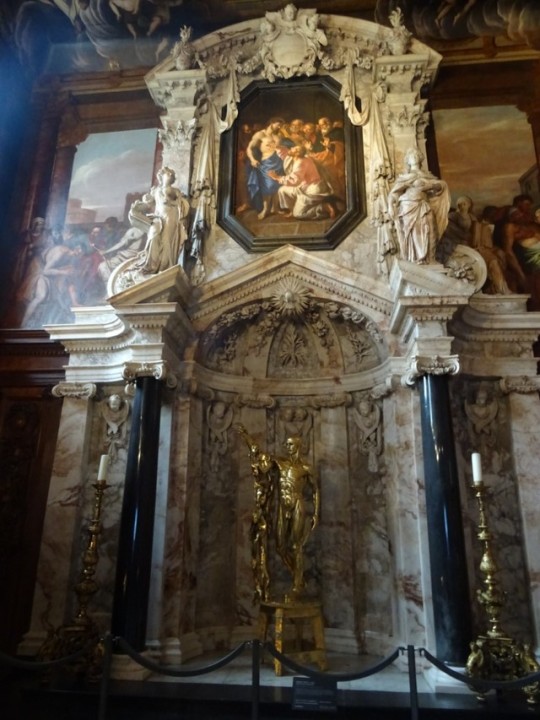
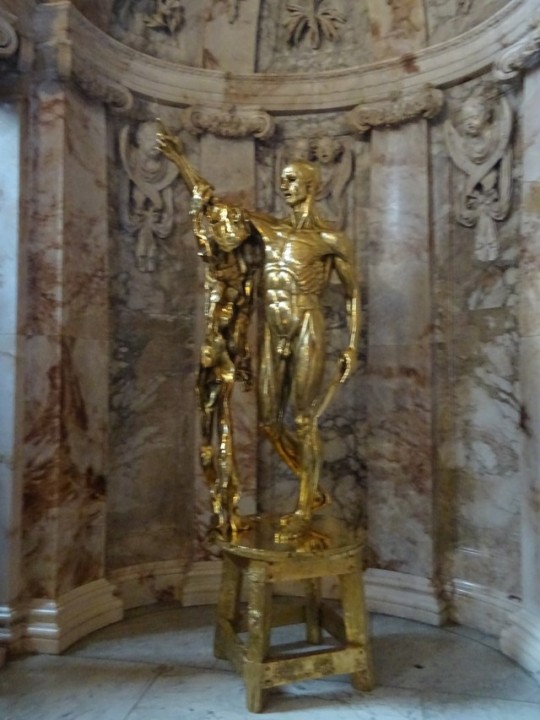
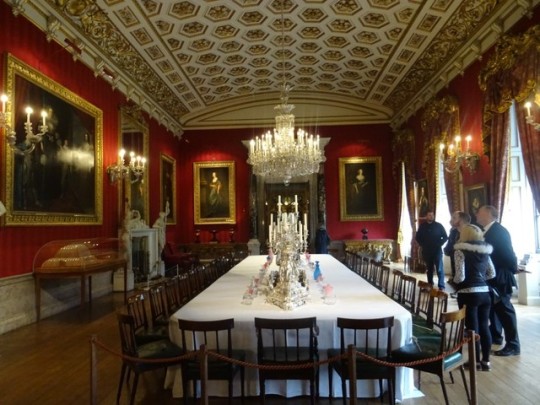
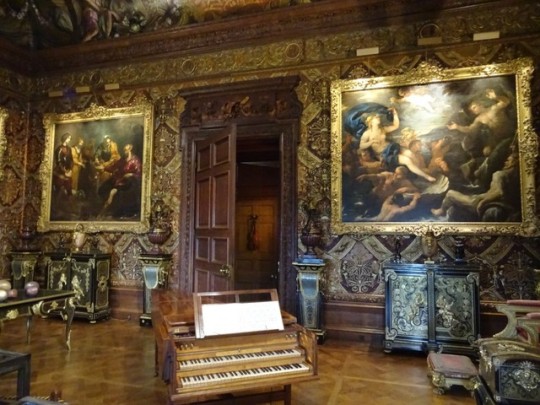
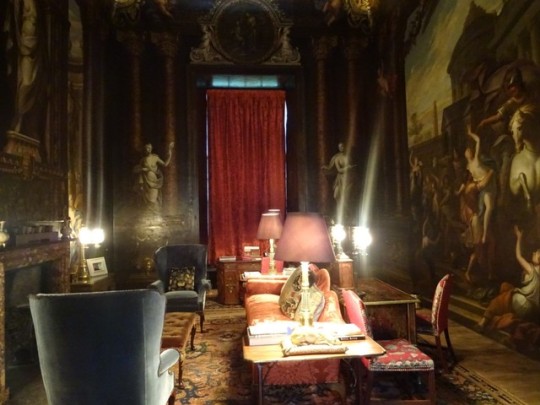
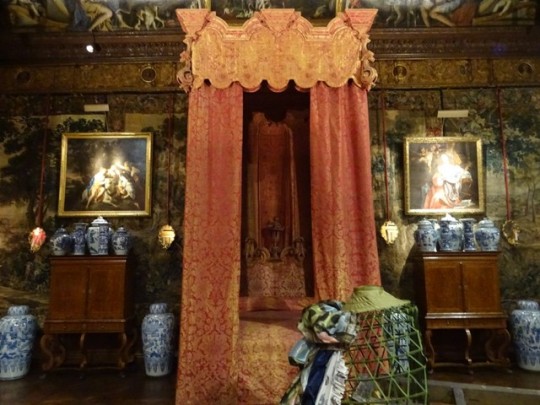
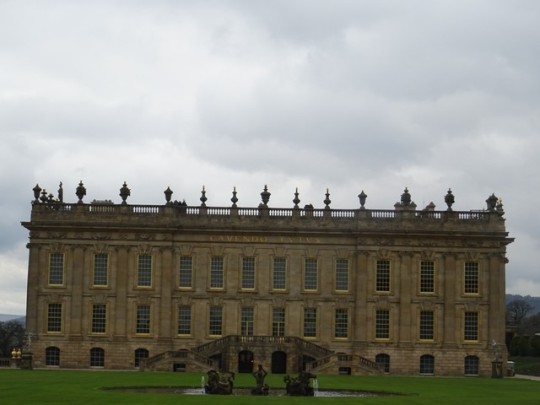
“[Whigs] were the very embodiment of glamour and grandeur, high rank and high living. Between 1688 and 1874, dukedoms and marquessates were profligately scattered in their direction. Like Trollope’s Duke of Omnium, they seemed born to be Knights of the Garter and Lord-Lieutenants of their county. And their great houses were quite unlike any other, with their black and white marble halls, their painted ceilings, their Roman busts, their magnificent libraries, and a certain indefinable air of distinction”. David Cannadine.
At Chatsworth, the home of the Cavendish family from 1549 to the present day; the present duke, the 12th Duke of Devonshire, still lives here.
Although the Cavendishes were establishing themselves as a prominent Derbyshire family, little remains of the great Elizabethan house and the present house is largely the design of William, 4th Earl of Devonshire who ushered in the tradition of Whig political activism and service in London and estate-building in Derbyshire.
William Cavendish was one of the “Immortal Seven” who invited William of Orange. the future William III, to come to England and overthrow James II, who was associated with Catholicism and absolutism, ideas anathema to the Cavendishes and all Whigs.
After the success of this scheme in 1688, Cavendish was rewarded by being made the 1st Duke of Devonshire in 1694 and his successes in these years were marked by a building programme at Chatsworth for which, as well as the building in the garden which we saw yesterday, they commissioned William Talman to design the house as still largely exists today and was encapsulated by (1) William Cowen in 1828 (the rest were all taken by me yesterday).
The painted room (3), which welcomes people who enter by the front door, dates to this period, as do (4) the chapel, an astonishing period piece of baroque architechture, quarried from local stone, and barely altered from Samuel Watson’s design because really how could you alter or improve on that?
(Though there is the welcome addition of (5) Damien Hirst’s statue of St Bartholomew, Exquisite Pain, from 2006 in which Bartholomew holds his own flayed skin and forcibly reminds the viewer that even at Chatsworth the facts of life and death are immutable).
Moving forward a few decades, (6) the dining room was first called into service for the first of many royal visits- Princess, later Queen, Victoria was the guest of William, the 6th Duke in 1832 and it’s still used for formal dinners to this day, though the company is slightly less distinguished since my invite was lost in the post.
The 6th Duke was very active in London- a leading Whig politician, he campaigned for the abolition of slavery and Catholic emancipation- and at home, where he improved the gardens and oversaw changes inside such as (7) the introduction of the state music room, in what was once the Green Velvet Room, of which little remains. Although opinion is divided on this room, I myself revel in it and hope you can see why.
Then to the sabine room (8) for the recreation of guests, and (9) the state bedchamber, which has been worked and reworked for centuries to hold several royal guests, though the visit of William III and Mary I for which the 1st Duke ordered its construction in fact ended up not happening.
The first intimations of mortality came to Chatsworth in the time of the 8th Duke, Spencer Compton Cavendish, who was ostensibly as grand a landlord and distinguished a politician as his forebears- he was at one stage leader of the Liberal Party- but who found himself beset on several fronts.
In 1885 Spencer Cavendish lamented that there was “nothing for the Whigs to do but to disappear or turn Tories” and he went half way to doing that but didn’t quite, and as a Liberal Unionist served in, without quite being part of, a Tory-led coalition, as head of the education department.
The general decline in aristocratic fortunes expertly told by David Cannadine led him to divest himself from many of his agricultural and industrial holdings and caused him setbacks in London where he bitterly opposed the Liberal government’s policy on Home Rule- even more personally since his brother Frederick was killed by terrorists in the Phoenix Park Murders of 1882.
Spencer Cavendish didn’t become Prime Minister after the Liberal victory of 1880, partly because it was thought the party wouldn’t have accepted his leadership- and ended up leaving the party his family had served for centuries and forming an alliance with the Tories.
The problems didn’t end there was his Liberal Unionist colleagues included bitter rivals like Joe Chamberlain with whom he disagreed on most other issues, such as free trade- and he resigned as chairman of the Liberal Unionist Association in 1904 over free trade, which he (like the Liberal Party he’d left) supported and Chamberlain opposed .
Spencer Cavendish never found the arena for his talents because it simply wasn’t his time, or the time for any Whig, as Mr Gladstone increasingly moved away from them and towards the radicals. They found Herbert Asquith, who with his chancellor Lloyd George introduced death duties in 1908, even less to their liking; this tax would cause major trouble at Chatsworth.
Writes David Cannadine of the Whigs, “they began in 1688 with a protest against royal extremism; they ended, in 1886, with a protest against democratic extremism. But whereas in the late seventeenth century the Whigs were successfully swimming with the tide of history, by the late nineteenth they were vainly struggling against it”.
The problems were compounded when Spencer died in 1908 and his nephew Victor, the 9th Duke, was the first to be hit by death duties, forking out £500,000. The position worsened after World War 1, in which Victor’s son, the future 10th Duke Edward, fought bravely in Egypt and France and came home to a very changed situation.
In 1920 the family’s London residence, Devonshire House, was demolished and after World War 2- in which a girls’ school was evacuated here and Edward’s son William was killed in battle- the family for a time didn’t live here, until 1959 when Andrew, 11th Duke, moved his family back here.
Andrew, who had served bravely in World War 2 in Italy, pioneered the return of past glories, and encouraged the public- who had in fact enjoyed access to the house for centuries- to come in greater numbers by promoting tourism and establishing the Chatsworth House Trust in 1981, so successfully that it was the most crowded house I’ve ever seen.
In 2004 Andrew died and his son Peregrine became 12th Duke, with the results that you can see inside and outside today.
Cavendo tutus!
2 notes
·
View notes